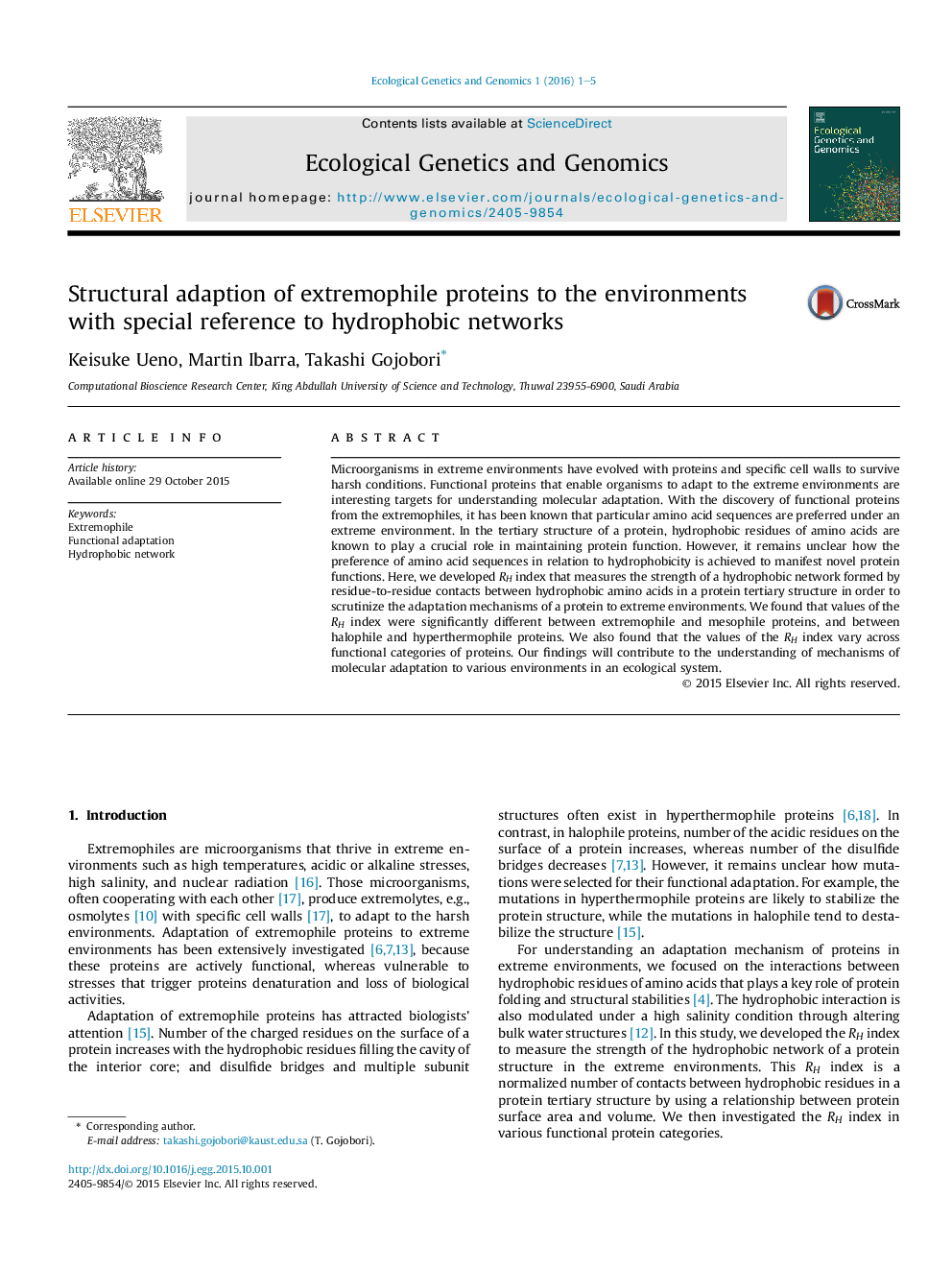| Article ID | Journal | Published Year | Pages | File Type |
|---|---|---|---|---|
| 2813470 | Ecological Genetics and Genomics | 2016 | 5 Pages |
Microorganisms in extreme environments have evolved with proteins and specific cell walls to survive harsh conditions. Functional proteins that enable organisms to adapt to the extreme environments are interesting targets for understanding molecular adaptation. With the discovery of functional proteins from the extremophiles, it has been known that particular amino acid sequences are preferred under an extreme environment. In the tertiary structure of a protein, hydrophobic residues of amino acids are known to play a crucial role in maintaining protein function. However, it remains unclear how the preference of amino acid sequences in relation to hydrophobicity is achieved to manifest novel protein functions. Here, we developed RH index that measures the strength of a hydrophobic network formed by residue-to-residue contacts between hydrophobic amino acids in a protein tertiary structure in order to scrutinize the adaptation mechanisms of a protein to extreme environments. We found that values of the RH index were significantly different between extremophile and mesophile proteins, and between halophile and hyperthermophile proteins. We also found that the values of the RH index vary across functional categories of proteins. Our findings will contribute to the understanding of mechanisms of molecular adaptation to various environments in an ecological system.
